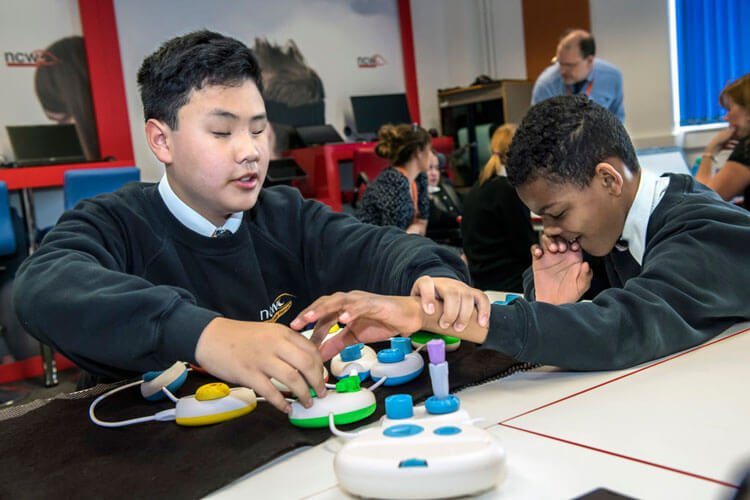In the current age of technology and artificial intelligence, E-learning is as important as any other thing because it is highly efficient and available 24/7, which means you can get your hands on it whenever and wherever you want. (BAW, n.d.)
However, in this contemporary technology-centric world, some people are visually impaired and need coursework help and special equipment to perform their daily tasks. Thus, there are many platforms where such people can take assistance, like the best academic writing service or any such help from the internet.
Calendars, watches, signs, print in magazines and books and text on a computer screen are just a few examples of the many different ways and instruments we all use to read, write, and gather information. You probably utilize various writing instruments throughout the day, including a pen, pencil, and computer keyboard.
We all require a range of literacy skills, just like you, if we have visual impairments and other disabilities. The most useful tools to him will be those that fit his needs, are easy for him to comprehend and use, and are most efficient.
Among all such readily available resources, there are so many areas where society has to work on and be more concerned about the visually impaired netizens.
With the founding of a special school for the blind in the early 1950s, Uganda began offering the first specialized education to children with visual impairment.
Education for children with visual impairment
Several residential facilities for kids with visual impairments were established in nationwide mainstream schools. The Centre for Training of the Blind in the different regions established one of the first certificate-granting training programs for instructors of children with visual impairments.
Furthermore, the Danish International Development Agency assisted in the establishment of the Uganda National Institute of Special Needs Education in 1988. (Oslo, 2014)
The requirement for instruction in the Expanded Core Curriculum is also outlined in the National Agenda for Students with Visual Impairments. These are the functional skills that equip pupils for life and the disability-specific blindness skills that kids need to access the core curriculum.
What sort of aid would blind children require?
Children who are blind need to be consistently taught these abilities. Both the core curriculum and incidental learning do not include all of them. There are ten of them: (Wright, 2017)
Compensatory skills [the abilities required to access the core curriculum (fundamental ideas, organizational/study abilities, and listening abilities)]
- Talents in communication (Braille, slate and stylus, signature writing)
- Mobility and directionality
- Skills in social interaction
- Ability to live independently
- Leisure and recreational abilities
- Using visual skills and low-eyesight equipment
- Abilities in assistive technology
- Career guidance, self-determination, and advocacy
Skills that visually impaired people need from society
Social and personal abilities
This includes completing schoolwork on your own, participating in group projects, and using supplies like scissors and glue in the classroom. At this moment, emphasis should be placed on promoting independence.
For instance, vocal reminders and directions will promote independence far more effectively than a hand-over-hand method. Kindergarten students require social abilities to engage with other kids, such as sharing, taking turns, and cooperating in games.
Children at this age benefit from experiences outside the classroom, such as those in the neighbourhood and with community organizations, which aid in developing social skills and friendships.
Language and Literacy Skills
Children who are sighted must demonstrate comprehension of print principles. This translates into grasping that Braille dots exist and express significance for blind and visually impaired kids who will learn Braille.
It also entails learning book skills like turning pages and reading Braille. They require basic phonics abilities, such as recognizing rhymes and beginning/ending sounds, just like other kids. Additionally, they must show that they can understand stories that have been told by recalling specifics and the order of events.
Health and physical development
These concern both gross and fine motor skills. Children must navigate the classroom, building, and schoolyard independently. For students to be independent at this point, orientation and mobility education are essential.
If the student is currently using an adult or peer as their sighted guide, they will not have the chance to learn these abilities, and both the child and the school will form bad habits and dependent attitudes. Kindergarten students should be capable of using the restroom, washing their hands, hanging up their outerwear, and eating independently. Children who are blind should be given a chance to develop these abilities as well.
Areas to consider
The preparation of materials involves four principles.
- The most recommended approach for preparing resources is duplication.
- Sometimes changes are made to the content, presentation style, kind of material, and expected behaviour from the youngster.
- When there are no adequate means to adjust the contents, it may be necessary to substitute an experience to make it nearly resemble that provided to sighted equivalents.
- Unavoidable circumstances may force the omission of an idea or lesson.
Conclusion
In developing nations, organizations that support the blind, as well as professionals, have a general
understanding of integrated education.
There is broad agreement that the purpose of integrated education should be to normalize the life and education of blind kids, but ideas on how to accomplish this goal differ greatly. Currently, developing nations are home to at least eleven integrated education models.
Children with blindness make up more than 90% of underdeveloped nations’ rural, dispersed populations. Finding the necessary number of blind kids in a remote area to serve as resource models is challenging.
In such cases, the only financially viable option would be an itinerant strategy where one resource teacher could provide for the requirements of several clusters of blind students with the help of regular classroom teachers.
References
BAW. (n.d.). The Age Of E-Learning. Retrieved from BAW: https://bestassignmentwrite.cog.uk/blog/the-age-of-e-learning/
Oslo, U. o. (2014). Including teaching blind children.
Wright, L. (2017). The Skills of Blindness: What Should Students Know and When Should They Know It? Retrieved from https://nfb.org/images/nfb/publications/fr/fr26/issue3/fr260304.htm

Average Rating